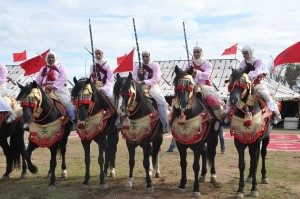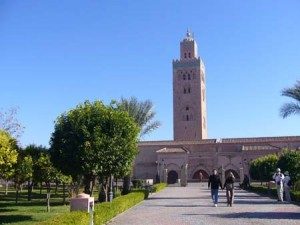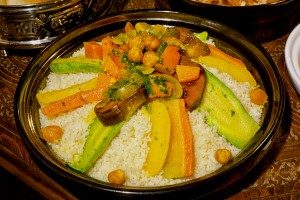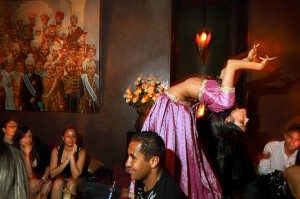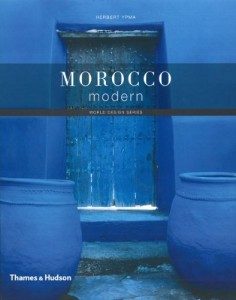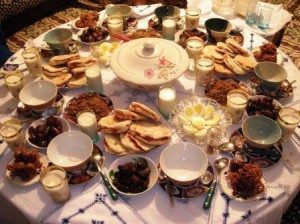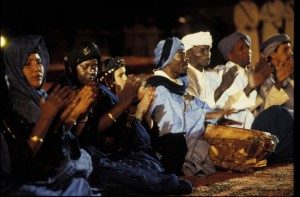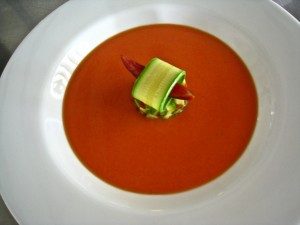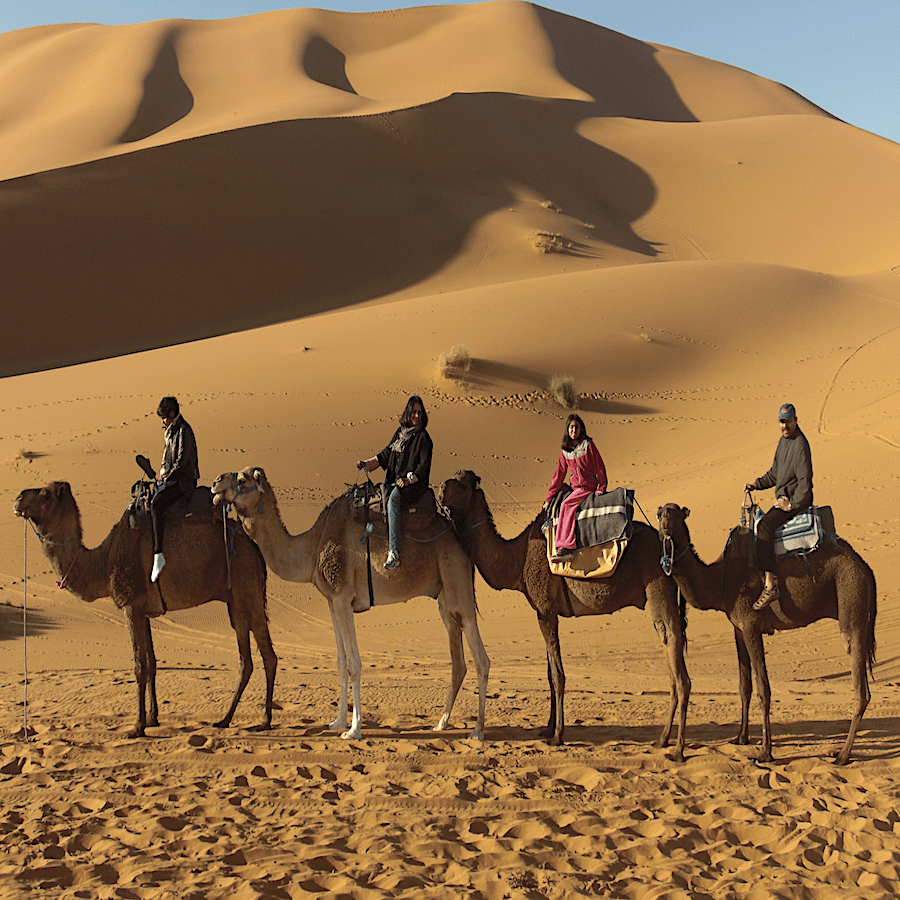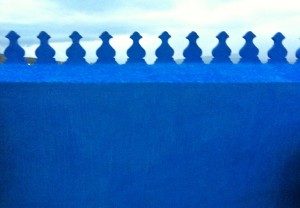Traveling to Morocco during one of its incredible festivals is a great way to explore Morocco, haven an up close experience with people and better understand Morocco’s varied traditions. Visiting a festival in Morocco as part of a private Morocco tour can done year round given Morocco offers a wide range of festivals and mousseums (traditional local celebrations). Many regions in Morocco from the seaside bastion El Jadida, the Portuguese Port and Berber City of Essaouira and the city of Fez all have celebratory festivals and mousseums. The Fez Festival of World Sacred Music which takes place each June is one of Morocco’s most popular festivals along with Mawazine of Rabat. Morocco’s Festivals have much to offer ranging from elaborate fantasia horse shows to exotic local music and are all held out doors in heart of of old Moroccan cities which make the experience of traveling to Morocco’s festivals all the more worthwhile.
Tag: Travel Exploration
The famous Koutoubia Mosque dominates the skyline of Marrakech. Koutoubia Mosque is 77 meters high, including it’s majestic minaret, and was built in 1158 by the Almohad Caliph Abd al-Mu’min (1094–1163) then completed by his grandson the Almoravid Sultan Yacoub El Mansour in 1195. Caliph Abd al-Mu’min also built the Giralda Tower in Seville and the Hassan Tower in Rabat which was never completed. The towering square Koutoubia minaret in Marrakech is all the more striking because the limestone walls remain undecorated by modern restorers.
Morocco has an exceptional history of cuisine with long standing reputation and allure for the Western traveler. Being at the crossroads of many civilizations Morocco is a mélange of Arab, Berber, Moorish, French, Middle Eastern, Mediterranean African, Iberian, and Jewish influences. Keeping up to date with new travel trends, Travel Exploration has launched a Culinary Trip to Morocco for food enthusiasts. Morocco is a key destination for foodies, adventure travelers and those who wish to explore an untouched country that is full of culinary surprise and old world culture.
Marrakech, often referred to as the Paris of Morocco and the premier Moroccan city of night lights and romance has something of a reputation for its nightlife. Marrakech has a reputation for seedy bars and expensive discos in high end hotels with groovy, Ibiza-style discos and belly-dancing along with top end dining experiences that can be had on rooftop terraces.The best places for nightlife in Marrakech are in the wealthy Hivernage district’s 5 star hotels, Sofitel So Lounge, Hivernage Hotel and the Comptoir Darna Cocktail Bar. Low lighting, scented candles, and Moroccan lamps are strategically placed in the ground-floor restaurant of Comptoir. Diners can choose from low-lying tables under the Berber tent, or inside the charcoal and ocher restaurant proper. There is a small garden where you can lounge on the lime, orange, and red cushions and heavy Berber carpets. A wide, central staircase leads up to the real reason to come here: the harem like bar decked out in charcoal, orange, and burgundy veils where resident and guest DJ’s spin the latest in Euro-Arabian dance music with exotic dancers.
The French designer Yves Saint Laurent remarked of Marrakech that “This city leads me to color.” Morocco has fascinated many designers with its wealth of color and diversity of islamic design for the last century. The color in Morocco’s bright zellij tiles, woodwork, silver jewelry and cedar hand-crafted ceilings blend effortlessly with modern interior design. Morocco’s winding medina street scenes, colorful souks, majestic gardens and palaces provide the perfect inspiration to adorn a home.
Moroccan soups are tasty and fortifying and are accompanied during Ramadan with an assortment of sugary sweets to boost energy levels after a day of fasting The Ramadan fast is broken with harira a lentil and tomato based soup. dates and dried figs and chebakia, which are flower-shaped cookies soaked in honey and sprinkled with sesame seeds. Sweets are an integral part of the social aspect of Ramadan and the ftour meal.
Guelmim, famous for its blue people and as the gateway to the Sahara is in the South west of Morocco. It is the capital of the Guelmim-Es Semara region which includes Southern Morocco (south of the Souss-Massa-Draa region) and northern Western Sahara. It can be reached easily by road from Agadir.
Fes is the culinary and cultural capital of Morocco. The world famous Fes Sacred Music Festival takes place 7-15 June and Dar Roumana’s restaurant at 30 Derb el Amer Zkak, Roumane in Fes Medina will be open every day offering pre-concert dinners from 6pm – 8pm Dar Roumana will be offering a smaller menu (2 starters, 2 mains and 2 desserts) for a reduced price of 300dh for three courses or 225dh for two courses. For those not attending the festival Dar Roumana’s usual dinner service will continue as normal from 7.30pm – 9pm. It is essential to book well beforehand during this busy period in Fes. Dinner is served in the patio and on the Dar Roumana terrace with spectacular views of the Fes medina and includes varied delicacies such as roasted beetroot, orange, mint and feta salad, spiced roasted quail with dried fruit orzo, moroccan fishcakes with cucumber and radish ribbon salad and sweet harissa dipping sauce, baked chicken thighs with honey, hazelnut and saffron with carrot and cumin mash.
Tourists who bring their families on vacation will find a special entry into Moroccan society. Moroccans love children and much of Moroccan society is focused on the family and their offspring. Children are warmly welcomed and treated with every consideration in Morocco. Teaching children a few words of Arabic before they come to Morocco can be very rewarding. Children are a tremendous icebreaker and waiters, maids and shopkeepers will be far more attentive when there are children around.
Chefchaouen is a small charming relaxed city of about 40,000 inhabitants located in northeastern Morocco close to Tangiers and Tetouan and the Spanish enclave of Ceuta. It can also be reached from Fes. Chefchaouen is unlike any other town in Morocco and has a laid back charm with buildings painted in many shades of blue in the 1930’s by Jewish refugees. Surrounded by mountains and towered over by twin peaks which give it is name, it is also called Chaouen by locals.

